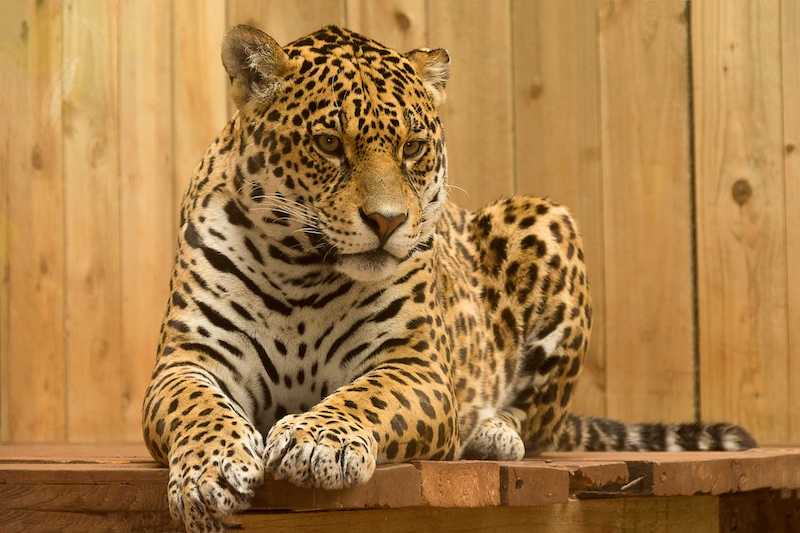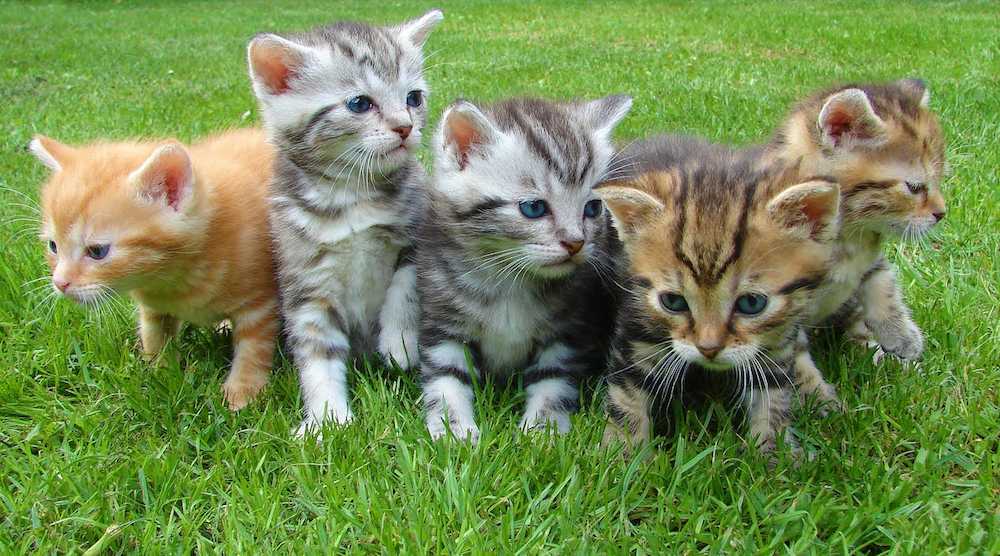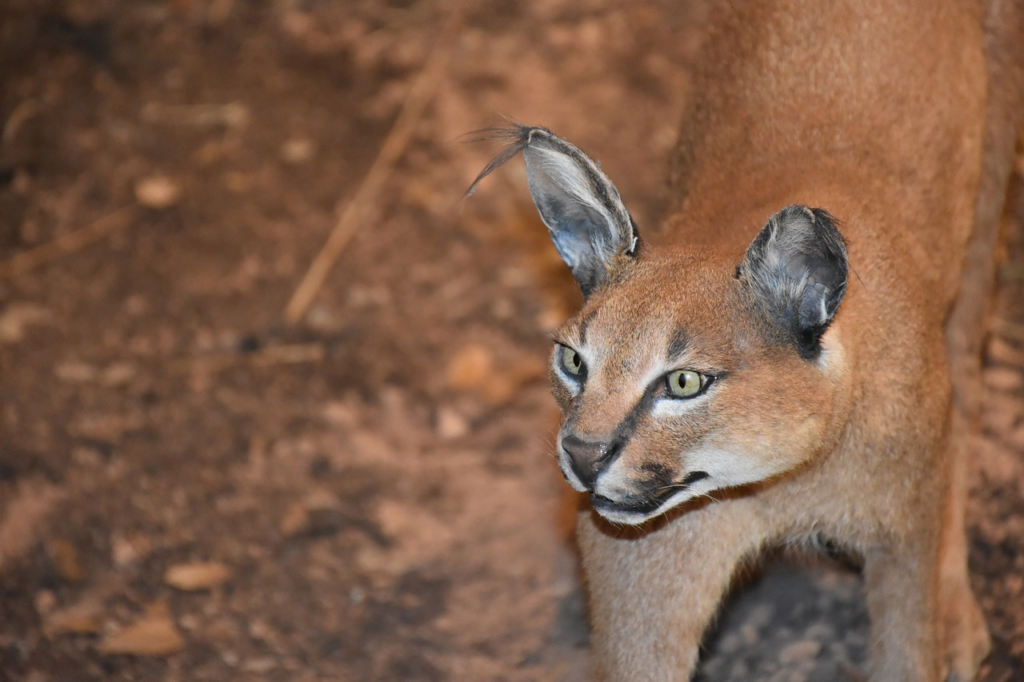
Wild cats have always captivated the human imagination with grace, power, and charm. These majestic creatures, known for their extreme independence and mysterious nature, are a true wonder of the animal kingdom. There are various wild cat types, each with unique characteristics and charm.
In this article, we will explore the diverse and fascinating world of feral felines, from the big cats roaming the African lion to the smaller Cheetah species in dense forests and grasslands.
What are Wild Cats, and Why are They Fascinating?
Wild cats, also known as felids, are carnivorous mammals from the Felidae family. They are found in various regions across the globe, from the vast African plains to the dense jungles of Asia and the Americas. What makes these animals truly captivating is their ability to survive and thrive in some of the harshest environments on Earth. They have adapted to different habitats and developed unique physical and behavioral traits that enable them to excel as apex predators.
What are the Different Types of Wild Cats?

Wild cats can be broadly categorized into two groups: big cats and small cats. Big cats, such as the African lion, Bengal tiger, Jaguar, and Snow leopard, are known for their impressive size and strength.
On the other hand, small cats, including servals, caracals, and ocelots, are more agile and adapt to various landscapes. Both groups exhibit distinct physical and behavioral attributes and have specific habitat preferences.
Classification of Wild Cats:
When it comes to wild cats, size does matter. Classifying these magnificent creatures into big and small cats helps us better understand their characteristics and behaviors.
Big Cats:

Big cats, such as lions, tigers, and jaguars, are known for their muscular build and powerful presence. They possess strong jaws, sharp claws, and a strong body that allows them to take down large prey. These majestic animals are often found in open grasslands and forests, where they can freely roam and establish dominance.
- Physical Attributes:
Big cats are known for their impressive physical attributes. They have muscular bodies, strong jaws, sharp teeth, and claws perfectly designed for hunting and capturing prey. Their size alone intimidates any potential threat, making them formidable predators.
- Behavioral Traits:
Big cats are solitary animals, preferring to roam and hunt alone. They are highly territorial and mark their boundaries with scent markings and vocalizations. These majestic creatures are also known for their exceptional hunting skills. They can swiftly and efficiently take down large herbivores like deer and wildebeest.
- Habitat and Distribution:
Big cats are found in various habitats across the globe. Lions, for example, are commonly found in the grasslands of Africa, while tigers inhabit the dense forests of Asia. On the other hand, Jaguars are primarily found in the rainforests of Central and South America. These habitats provide excellent cover and prey opportunities, allowing them to thrive in their respective ecosystems.
Small Cats:

Small cats, like servals, caracals, and ocelots, may not be as imposing in size, but they are equally fascinating. These agile and elusive creatures have adapted to different environments, from the African savannahs to the dense rainforests of South America. Their more diminutive size allows them to navigate through narrow spaces and hunt smaller prey with precision and stealth.
- Physical Attributes:
Their slender bodies, elongated legs, and sharp retractable claws enable them to climb trees and pounce on their prey with exceptional accuracy.
- Behavioral Traits:
Small cats are known for their keen senses and remarkable agility. They are excellent climbers and are often found perched on tree branches, observing their surroundings. These feline acrobats are also skilled hunters, relying on their stealth and speed to catch smaller prey, such as rodents and birds.
- Habitat and Distribution:
Small cats can be found in various habitats, ranging from grasslands and forests to wetlands and deserts. For example, Ocelots prefer the dense rainforests of South America. These diverse habitats provide small cats ample opportunities to thrive and adapt to their surroundings.
10 Types of Wild Cats
Now, let’s delve into the world of wild cats and discover the ten most fascinating types of these majestic creatures.
1. African Lion (Panthera Leo)

The African lion is one of the most iconic and revered wild cats. It is known for its magnificent mane, distinguishing it from other big cat species. African lions are social animals, often living in pride with several females and their offspring. They have a robust build and can reach impressive speeds when hunting.
- Habitat and Range:
African lions primarily inhabit the grasslands and savannahs of sub-Saharan Africa. They can be found in Kenya, Tanzania, South Africa, and Botswana. These vast open spaces allow them to hunt and establish their territories.
- Conservation Status:
The International Union for Conservation of Nature (IUCN) lists the African lion as vulnerable. Habitat loss, human-wildlife conflict, and poaching threaten their survival. Conservation efforts are underway to protect these majestic creatures and ensure their long-term survival.
2. Bengal Tiger (Panthera tigris tigris)

The Bengal tiger is the largest and most potent of all tiger subspecies. It has a striking coat with black stripes, which serve as excellent camouflage in its natural habitat. Bengal tigers are known for their exceptional strength and agility, capable of taking down large prey such as deer and wild boar.
- Habitat and Range:
Bengal tigers are primarily found in the dense forests of India, Bangladesh, and Nepal. They prefer habitats with lush vegetation and access to water sources. These majestic creatures require large territories to roam and hunt, making conservation efforts crucial for survival.
- Conservation Status:
The Bengal tiger is currently listed as endangered by the IUCN. Habitat loss, poaching for their body parts, and conflicts with humans are the primary threats to survival. Efforts are being made to protect their remaining habitats and curb illegal wildlife trade.
3. Cheetah (Acinonyx jubatus)

The cheetah is a unique and fascinating wild cat known for its incredible speed. It is the fastest land animal, capable of reaching speeds of up to 70 miles per hour in short bursts. Cheetahs have a slender build, with a long tail for balance and distinctive black tear marks on their faces.
- Habitat and Range:
Cheetahs are primarily found in sub-Saharan Africa and parts of Iran. They inhabit various habitats, including grasslands, savannahs, and semi-deserts. These open landscapes provide them with ample space to chase down their prey and rely on their incredible speed.
- Conservation Status:
The cheetah is currently listed as vulnerable by the IUCN. Habitat loss, poaching, and conflicts with humans are the main threats to their survival. Conservation efforts focus on protecting their habitats, mitigating human-wildlife conflicts, and implementing anti-poaching measures.
4. Snow Leopard (Panthera uncia)

The snow leopard is a magnificent wild cat adapted to the harsh mountainous regions of Central and South Asia. It has a thick fur coat, which helps it survive in extremely cold temperatures. Snow leopards are known for their elusive nature and incredible agility in navigating rocky terrains.
- Habitat and Range:
Snow leopards inhabit the rugged and remote mountains of the Himalayas, as well as the high-altitude steppes of Central Asia. They are found in Nepal, India, Bhutan, and Mongolia. These elusive creatures have adapted to survive in extreme conditions, where they prey on blue sheep and other mountain ungulates.
- Conservation Status:
The snow leopard is currently listed as vulnerable by the IUCN. Habitat loss, poaching, and retaliatory killings by herders pose significant threats to their survival. Conservation efforts focus on establishing protected areas and implementing community-based conservation initiatives.
5. Jaguar (Panthera onca)

The jaguar is a powerful and enigmatic big cat found in the Americas. Its muscular build has a distinctive coat pattern consisting of rosettes and spots. Jaguars are known for their exceptional swimming abilities and are often found near water sources, making them unique among big cats.
- Habitat and Range:
Jaguars inhabit various habitats, including rainforests, swamps, and grasslands. They are primarily found in Central and South America, with some populations extending into the southwestern United States. These elusive creatures require large territories and access to water, making conservation efforts crucial for their survival.
- Conservation Status:
The jaguar is currently listed as near threatened by the IUCN. Habitat loss, poaching, and conflicts with humans are the primary threats to their survival. Conservation efforts focus on protecting their remaining habitats and establishing wildlife corridors to promote genetic diversity.
6. Puma (Puma concolor)

The puma, also known as the mountain lion or cougar, is a large wild cat in the Americas. It has a slender build and a coat that can range from brown to gray, providing excellent camouflage in its natural habitat. Pumas have exceptional jumping abilities and can leap up to 20 feet in a single bound.
- Habitat and Range:
Pumas have a wide distribution, ranging from Canada to Argentina. They inhabit various habitats, including forests, mountains, and deserts. These adaptable creatures can survive in diverse environments, making them one of the most widespread wild cats in the Americas.
- Conservation Status
The puma is currently listed as least concern by the IUCN. While some populations are stable, others face threats due to habitat loss and human conflicts. Conservation efforts focus on maintaining connectivity between people and mitigating livestock conflicts.
7. Leopard (Panthera pardus)

The leopard is a highly adaptable and elusive big cat found in various regions of Africa and Asia. It has a sleek and muscular build, with a coat ranging from pale yellow to deep gold, adorned with distinctive black rosettes. Leopards are known for their exceptional climbing skills and are often found resting on tree branches.
- Habitat and Range:
Leopards have a wide distribution, ranging from sub-Saharan Africa to parts of Asia. They inhabit various habitats, including forests, grasslands, and mountains. These versatile creatures can adapt to different environments and survive in arid and humid regions.
- Conservation Status:
The leopard is currently listed as vulnerable by the IUCN. Habitat loss, poaching, and conflicts with humans are the primary threats to their survival. Conservation efforts focus on protecting their habitats, implementing anti-poaching measures, and promoting coexistence between leopards and local communities.
8. Serval (Leptailurus serval)

The serval is a small wild cat known for its distinctive long legs and large ears. It has a slender build and a coat covered in bold spots. Servals are agile hunters, capable of leaping high into the air to catch birds and rodents.
- Habitat and Range:
Servals are primarily found in the grasslands and wetlands of sub-Saharan Africa. They prefer habitats with tall grasses and access to water sources. These adaptable creatures can survive in various environments, including savannahs and marshlands.
- Conservation Status:
The serval is currently listed as least concern by the IUCN. While their populations are relatively stable, habitat loss and poaching for their fur pose potential threats. Conservation efforts focus on protecting their habitats and ensuring the sustainability of wetland ecosystems.
9. Caracal (Caracal caracal)

The caracal is a medium-sized wild cat known for its distinctive tufted ears and sharp hunting skills. It has a muscular build and a coat that can range from reddish-brown to sandy gray. Caracals are exceptional jumpers, capable of catching birds in mid-air.
- Habitat and Range:
Caracals are found in various regions of Africa, the Middle East, and Asia. They inhabit multiple habitats, including savannahs, scrublands, and woodlands. These adaptable creatures can survive in arid regions with limited water sources.
- Conservation Status:
The caracal is currently listed as least concern by the IUCN. While their populations are relatively stable, habitat loss and human conflicts pose potential threats. Conservation efforts focus on raising awareness and implementing measures to mitigate human-wildlife conflicts.
10. Ocelot (Leopardus pardalis)

The ocelot is a small wild cat found in the rainforests of Central and South America. It has a stunning coat with a pattern of rosettes and spots, providing excellent camouflage in its dense habitat. Ocelots are known for their exceptional agility and nocturnal hunting habits.
- Habitat and Range:
Ocelots primarily inhabit the dense rainforests of Central and South America, including countries such as Brazil, Mexico, and Colombia. They require lush vegetation and a diverse prey base to thrive. These elusive creatures are highly adaptable and can survive in fragmented habitats.
- Conservation Status:
The ocelot is currently listed as least concern by the IUCN. While their populations are relatively stable, habitat loss and illegal wildlife trade pose potential threats. Conservation efforts focus on protecting their remaining habitats and implementing measures to curb illegal trafficking.
Threats and Conservation:
1. Human Impact on Wild Cat Populations
The survival of wild cat species is under threat due to various human activities. Habitat loss and fragmentation, primarily driven by deforestation and urbanization, have significantly reduced the range of wild cats.
Poaching for their fur, body parts, and bones also significantly threatens their survival. In addition, human-wildlife conflict, where wild cats conflict with human settlements, often leads to retaliatory killings.
2. Conservation Efforts and Success Stories
Despite the challenges, significant conservation efforts have been made to protect and conserve wild cat populations. National parks and protected areas have been established to safeguard their habitats and provide a haven for these magnificent creatures.
Conservation organizations and local communities are working to raise awareness, implement anti-poaching measures, and promote sustainable practices. Some success stories include the recovery of the Iberian lynx population in Spain and Portugal and the conservation efforts to protect the critically endangered African golden cat in Central and West Africa.
The Role of Wild Cats in Ecosystems:
Wild cats play a crucial role in maintaining the balance of the ecosystems they inhabit. As apex predators, they regulate the populations of prey species, preventing overgrazing and maintaining the health of vegetation. Their presence also helps in controlling the spread of disease within prey populations.
Furthermore, wild cats contribute to the overall biodiversity of their habitats and act as indicators of the health of ecosystems. Protecting wild cats ensures their survival and helps preserve the integrity of entire ecosystems.
Human-Wild Cat Interactions:
Human-wild cat interactions can be complex and vary depending on the species and the context. In some cases, conflicts arise when wild cats come close to human settlements, resulting in attacks on livestock or pets.
However, it is essential to remember that these conflicts are often a result of habitat loss and fragmentation, which forces wild cats to venture into human-dominated areas in search of food and shelter. Finding sustainable solutions that balance the needs of both humans and wild cats is crucial for their coexistence.
Conclusion:
In conclusion, wild cats are fascinating and diverse creatures essential to our natural world. Each wild cat has unique characteristics and charm, from the iconic African lion to the elusive ocelot. However, They are facing numerous threats, but their survival is in our hands. By supporting conservation efforts, raising awareness, and promoting sustainable practices, we can ensure a future where wild cats continue to roam freely in their natural habitats.
Visit our website to learn more about wild cats and how you can help.
What is the most common wild cat?
The most common wild cat in the world is the bobcat. It is found in North America, from southern Canada to central Mexico. Bobcats are about the size of a domestic cat but have longer legs and tails. They are solitary animals and are active at night.
What is a wild type cat?
A wild-type cat is a cat that is not a domestic cat. It is a member of the Felidae family, but it lives in the wild and is not domesticated. There are many different types of wild cats, including lions, tigers, leopards, jaguars, and cheetahs.
How many types of cats are there in the wild?
There are over 40 different types of wild cats in the world. Some of the most common include:
- Lion (Panthera Leo)
- Tiger (Panthera tigris)
- Leopard (Panthera pardus)
- Jaguar (Panthera onca)
- Cheetah (Acinonyx jubatus)
- Snow leopard (Panthera uncia)
- Sunda clouded leopard (Neofelis diardi)
- Marbled cat (Pardofelis marmorata)
What is the most beautiful wild cat?
The most beautiful wild cat is a matter of opinion, but some of the most popular contenders include:
- Ocelot
- Caracal
- Serval
- Clouded leopard
What is the king of wild cats?
The king of wild cats is the lion. Lions are the giant wild cats in the world, and they are the only cats that live in social groups called pride. Lions are apex predators, meaning they are at the top of the food chain.
What’s the biggest wild cat?
The biggest wild cat is the tiger. Tigers are found in Asia, and they can grow up to 13 feet long and weigh up to 600 pounds. Tigers are apex predators and an essential part of the ecosystem.
Is a wild cat friendly?
Wild cats are not friendly in the same way that domestic cats are. They are wild animals, and they can be dangerous if they feel threatened. However, some wild cats can be trained to be around humans, but this is only sometimes possible.
What is the powerful wild cat?
The most powerful wild cat is the tiger. Tigers have a bite force of 1,050 psi, which is the strongest bite force of any cat. Tigers are also powerful and agile animals.
Is wild cat harmful to humans?
Wild cats can be harmful to humans if they feel threatened. They have sharp claws and teeth that can cause serious injuries. However, most wild cats will avoid humans if they can.
Do wild cats eat?
Yes, wild cats eat. They are carnivores and eat various animals, including prey such as rodents, birds, and small mammals. Some wild cats also eat larger prey, such as deer and antelope.
What cat is stronger than lion?
No cat is stronger than a lion. However, some cats are more agile and faster than lions. For example, the cheetah is the fastest land animal in the world and can run up to 70 mph.



